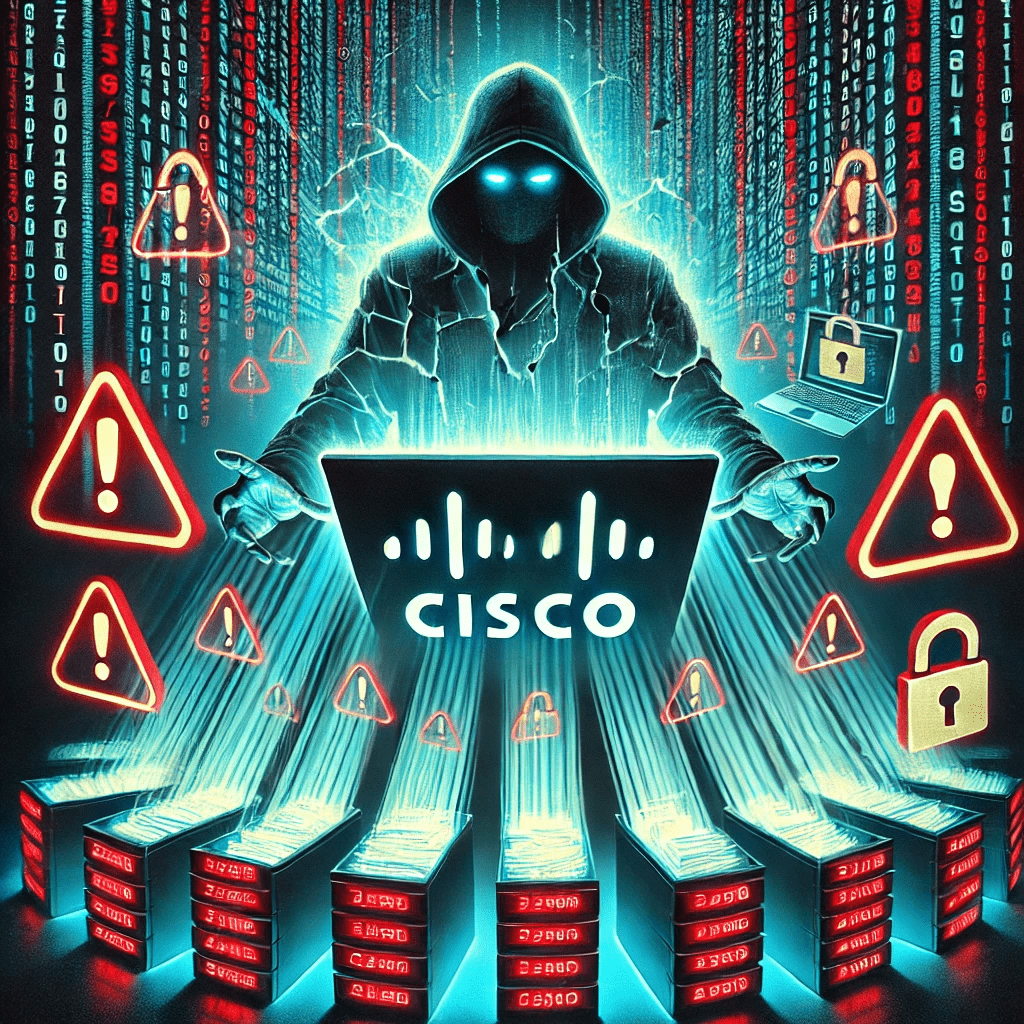IntelBroker Leaks 2.9 TB of Exposed Cisco Records: What You Need to Know
Join our weekly newsletters for the latest updates and exclusive content on industry-leading AI, InfoSec, Technology, Psychology, and Literature coverage. Learn More
Introduction

On December 17, 2024, the notorious hacker IntelBroker released 2.9 TB of sensitive data allegedly stolen from a Cisco developer resource. This is part of a claimed 4.5 TB dataset linked to Cisco products, as well as customers in the telecom and financial services sectors.
The breach has sent shockwaves through the tech and cybersecurity communities, highlighting the risks posed by misconfigurations and unprotected developer environments. This article examines the details of the breach, Cisco’s response, and the broader implications for cybersecurity.
The Breach: What Happened?
IntelBroker claims to have exploited a misconfiguration in Cisco’s public-facing DevHub, which exposed files containing sensitive information.
Key Details of the Breach:
- Data Volume: 2.9 TB of data leaked, with an additional 4.5 TB claimed.
- Source: Files were accessed via an exposed JFrog token.
- Affected Companies:
- Verizon
- AT&T
- Bank of America
- Barclays
- Chevron
- Microsoft
- SAP
- Sprint Telecom
- BT
What Was Leaked?
IntelBroker’s Claims Include:
- Production Source Code:
- Cisco Secure Access Service Edge (SASE)
- Identity Services Engine (ISE)
- Webex Collaboration Suite
- Umbrella DNS Security Product
- IOS XE & XR Operating Systems
- Catalyst Series Networking Equipment
- Sensitive Information:
- Hard-coded credentials and API tokens
- SSL certificates
- Jira tickets
- AWS and Azure storage buckets
- Private keys
- Development Tools and Resources:
- GitHub, GitLab, and SonarQube projects
Cisco’s Response
Cisco acknowledged the misconfiguration in its DevHub but maintained that its internal systems and enterprise environments were unaffected.
Official Statement Highlights:
- Action Taken: Public access to DevHub was removed, and an investigation was launched.
- Key Assertions:
- No breach of production or enterprise environments.
- Leaked data does not pose a threat to Cisco products or customers.
“We are confident that there has been no breach of our systems, and we have not identified any information in the content that an actor could have used to access any of our production or enterprise environments.”
IntelBroker’s Motive and Strategy
Sample Leak to Prove Legitimacy
IntelBroker claims the 2.9 TB sample serves as proof of the breach, potentially enticing buyers for the complete 4.5 TB dataset.
Reputation in the Dark Web Community
IntelBroker, known for high-profile breaches, has positioned itself as a credible threat actor. By offering a sample, it aims to build trust and drive sales of the remaining data.
Implications of the Breach
For Cisco:
- Brand Trust: Reputational damage may impact Cisco’s standing as a leading networking and security provider.
- Potential Exploits: Despite Cisco’s assurances, exposed credentials and source code could lead to vulnerabilities if improperly secured.
For Affected Customers:
- Telecom and Financial Services Risks: Organizations like Verizon, AT&T, and Bank of America may face additional scrutiny over their data protection practices.
- Supply Chain Security: The breach underscores the importance of securing third-party relationships.
For the Industry:
- Broader Lessons: Misconfigurations remain a significant vulnerability in enterprise environments, as demonstrated by this and other high-profile breaches.
Steps to Mitigate Similar Breaches
Organizations can take proactive measures to avoid similar incidents:
1. Secure Developer Environments
- Regularly audit developer resources for misconfigurations.
- Restrict public access to sensitive files and tools.
2. Strengthen Access Controls
- Rotate credentials and API tokens periodically.
- Implement least-privilege access policies.
3. Enhance Monitoring and Incident Response
- Use advanced monitoring tools to detect unauthorized access.
- Conduct regular penetration testing to uncover vulnerabilities.
4. Adopt Secure Development Practices
- Encrypt sensitive data in development environments.
- Train developers on secure coding and configuration best practices.
Conclusion
The IntelBroker leak of 2.9 TB of Cisco data highlights the dangers of misconfigured resources and underscores the need for stringent security practices in developer environments. While Cisco has downplayed the breach’s impact, the incident raises important questions about data governance, supply chain security, and the growing sophistication of threat actors.
As organizations navigate these challenges, vigilance and proactive measures will be key to staying ahead of cyber threats in an increasingly interconnected world.
Discover more at InnoVirtuoso.com
I would love some feedback on my writing so if you have any, please don’t hesitate to leave a comment around here or in any platforms that is convenient for you.
For more on tech and other topics, explore InnoVirtuoso.com anytime. Subscribe to my newsletter and join our growing community—we’ll create something magical together. I promise, it’ll never be boring! 🙂
Stay updated with the latest news—subscribe to our newsletter today!
Thank you all—wishing you an amazing day ahead!





